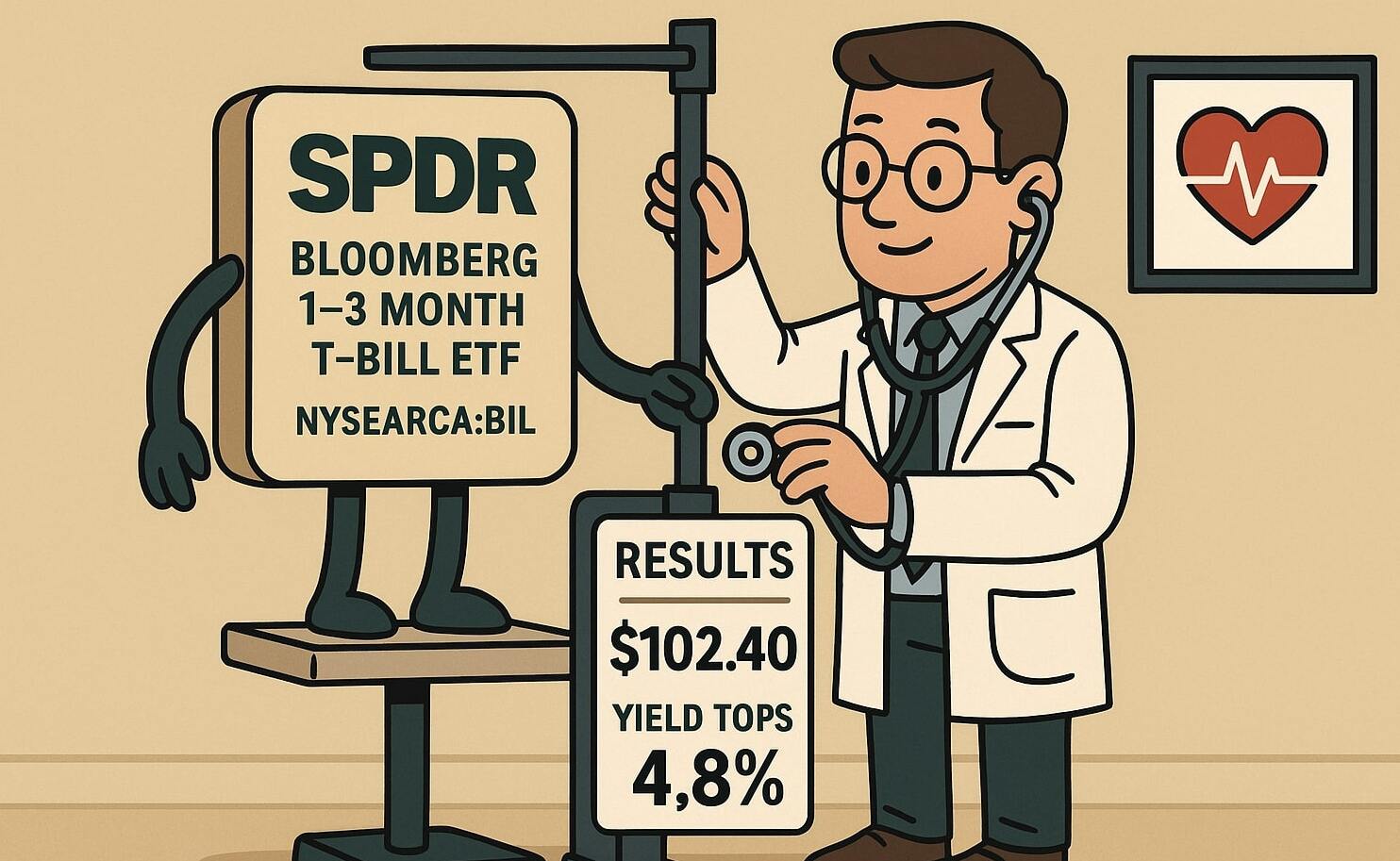
SPDR Bloomberg 1–3 Month T-Bill ETF (NYSEARCA:BIL) Reaches $102.40 as Yield Tops 4.8%—Could This Ultra-Short Treasury Play Beat Cash?
With just 0.15-year duration and $48 billion AUM, BIL’s principal-preserving bills are in hot demand—but will Fed rate cuts or tariff shocks pressure its next 12-month return? | That's TradingNEWS
NYSEARCA:BIL Performance Amid Turbulent Markets
Trading around $102.40 on Friday, the SPDR Bloomberg 1–3 Month T-Bill ETF has quietly delivered a 4.8 percent trailing twelve-month yield while preserving principal. Investors seeking refuge from equity gyrations have flocked to NYSEARCA:BIL’s fortress of ultra-short U.S. government bills, spiking assets under management to $48.5 billion. Track its live price action here .
Fund Flows Signal Intensifying Flight to Quality
When “Liberation Day” trade-war headlines roiled equities, BIL attracted over $1 billion on a single session and netted nearly $6 billion inflows in the past quarter, according to ETF flow data. Such demand underscores a market consensus that fleeting certainty on interest-rate policy and global growth warrants ultra-short duration allocations. Even as regional bank jitters and geopolitical tariffs dominate headlines, retiree and institutional buyers have edged further into BIL’s high-quality shelter.
Yield and Duration Dynamics Drive Income Profile
With a weighted average maturity of just 0.15 years, NYSEARCA:BIL’s portfolio rotates swiftly through newly issued Treasury bills, locking in the front-end of the yield curve. As the Federal Reserve paused at 4.25–4.50 percent in January and futures price in four quarter-point cuts by April 2026, BIL’s yield should ebb gradually—but remain elevated relative to money-market alternatives. Its ultra-low duration removes the mark-to-market whipsaw that longer bonds endure, making income both predictable and virtually uncorrelated with equities.
Trade Tariffs and Fed Outlook Create Uncertain Backdrop
Fitch’s analysis that a one-percent rise in tariff levies shaves 0.14 percent off GDP and adds 0.09 percent to core inflation left the fed funds futures market recalibrating rate-cut prospects. Rising trade tensions have already lifted BIL’s weekly inflows above $1 billion as investors seek a risk-free buffer. While the labor market remains firm at a 4.2 percent unemployment rate and headline growth outpaces contraction risks, tariff-driven price pressures may force the Fed to juggle its dual mandate well into 2026—further anchoring demand for NYSEARCA:BIL’s principal-preserving structure.
Comparing NYSEARCA:BIL with Alternative Cash Instruments
Like its 3–12 Month T-Bill sibling (BILS), BIL offers a gateway to front-end yields, yet BIL’s shorter maturity focus cushions it from even modest yield-curve steepening. Floating-rate note vehicles such as USFR provide a tiny spread cushion over T-bills but introduce slightly more credit complexity. Synthetic structures like BOXX defer taxable distributions, appealing in taxable accounts yet trading at a small liquidity concession. Each has merit, but NYSEARCA:BIL’s pure bill exposure and $48 billion AUM testify to its status as the benchmark cash‐market proxy.
Risks to the Ultra-Short Treasury Strategy
Should tariffs plunge the economy into recession or force the Fed into a surprise policy pivot, bill yields could collapse with each cut cycle—dragging BIL’s income profile lower. Reinvestment risk looms as maturing bills roll into a potentially lower-rate environment. And while default risk is effectively nil, sharp Fed accommodation could temporarily widen trading spreads, slightly denting NAV—that said, historical drawdowns have proven fleeting and shallow.
Having woven through fund flows, yield mechanics, macro uncertainty, and peer comparisons, the case for NYSEARCA:BIL’s role as a ballast is compelling. Its real-time chart sits at a technical floor formed in April’s spike in equity volatility, suggesting that the flight-to-quality narrative retains momentum. With a near-risk-free 4.8 percent yield locked in, NYSEARCA:BIL earns a Buy rating for investors seeking to shield capital and earn attractive income in an uncertain policy landscape.
















